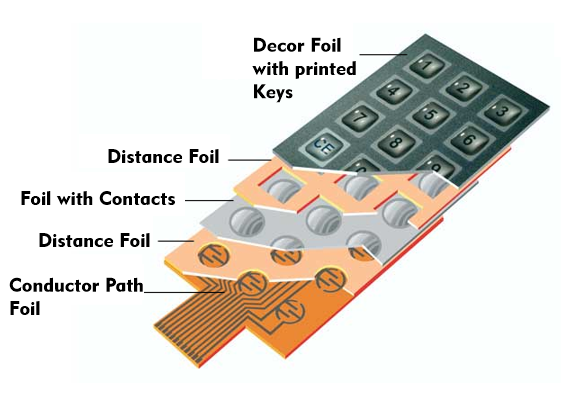membrane keyboard
A membrane keyboard is a flexible keyboard consisting of several foils. Compared to conventional keyboards, membrane keyboards have the advantages of being malleable, dustproof, splashproof and resistant to certain chemicals. They can be used in dusty environments, in factory and production halls, in household and medical appliances, on industrial controls and in remote controls. They are marked in their protection class( IP) and can be used accordingly.
In terms of structure, membrane keypads consist of several polyester films. The lowest foil is the base foil on which the metal domes for the keys are located. Above this is the conductor foil, whose conductors are routed to the outside of the connector via a conductor foil. Above the conductor track foil is a spacer foil, above this is the retaining foil with the contact points, above which is another spacer foil and the decorative foil. The latter is a closed foil printed with the keypad layouts. The conductors can be silver, the contacts tin-plated.
Membrane keyboards are malleable and can have embossing as operating aids. The electrical properties are comparable to those of conventional keyboards. For example, the insulation resistance is 100 mega-ohms and higher, the internal resistance is less than 100 ohms, and the contact resistance is in the range of several 100 milli-ohms. They can be mechanically loaded and used in a temperature range of up to 80 degrees and more. When a button is pressed, the circuit closes and a voltage is transferred across the trace.
A presival alternative to the membrane keypad is the silicone switching mat.

